
The University of North Alabama (UNA) is a public university in Florence, Alabama. It is the state's oldest public university. Occupying a 130-acre (0.5 km2) campus in a residential section of Florence, UNA is located within a four-city area that also includes Tuscumbia, Sheffield and Muscle Shoals. The four cities compose a metropolitan area with a combined population of 140,000 people.
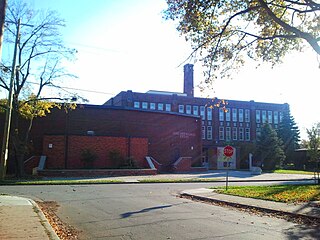
London South Collegiate Institute is a public high school in London, Ontario, Canada.

The Columbia University Marching Band (CUMB) was the marching band of Columbia University. Founded in 1904, it claimed to be the first college or university marching band in the United States to convert to a scramble band format, making the switch in the 1950s. Today, all of the Ivy League bands, as well as the Stanford Band, William & Mary Pep Band, and Marching Owl Band have adopted the scramble band style.
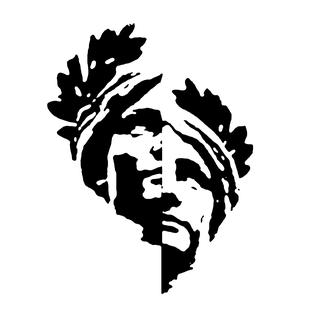
The Varsity Show is one of the oldest traditions at Columbia University. Founded in 1893 as a fundraiser for the university's fledgling athletic teams, the Varsity Show now draws together the entire Columbia undergraduate community for a series of performances every April. Dedicated to producing a unique full-length musical that skewers and satirizes many dubious aspects of life at Columbia, the Varsity Show is written and performed exclusively by university undergraduates. Various renowned playwrights, composers, authors, directors, and actors have contributed to the Varsity Show, either as writers or performers, while students at Columbia, including Richard Rodgers, Oscar Hammerstein II, Lorenz Hart, Herman J. Mankiewicz, I. A. L. Diamond, Herman Wouk, Greta Gerwig, and Kate McKinnon.

Leo the Lion is the mascot for the Hollywood film studio Metro-Goldwyn-Mayer and one of its predecessors, Goldwyn Pictures, featured in the studio's production logo, which was created by Paramount Pictures art director Lionel S. Reiss.

The Columbia University Lions are the collective athletic teams and their members from Columbia University, an Ivy League institution in New York City, United States. The current director of athletics is Peter Pilling.

Shasta is the mascot of the University of Houston athletics teams, the Houston Cougars. The name "Shasta" refers to both a live and an anthropomorphic costumed cougar mascot. Shasta's female counterpart is Sasha, also a costumed mascot.
"Roar, Lion, Roar" is the primary fight song of Columbia University. It was originally titled "Bold Buccaneers" and was written with different lyrics for the 1923 Varsity Show Half Moon Inn by Columbia undergraduates Corey Ford and Morris W. Watkins, and alumnus Roy Webb. In order to compete in the Columbia Alumni Federation's contest to find a school fight song the same year, Ford wrote a new set of lyrics that would become "Roar, Lion, Roar". The title references Columbia's mascot, the Columbia Lion.

Columbia University has developed many traditions over its 269-year-long existence, most of them associated with its oldest undergraduate division, Columbia College.

Butch The Cougar is the mascot of Washington State University. As his name indicates, Butch is a cougar.
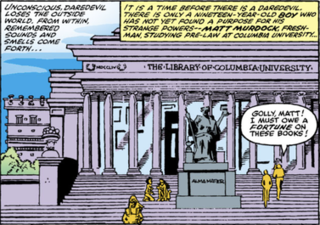
Columbia University in New York City, New York, as one of the oldest universities in the United States, has been the subject of numerous aspects of popular culture. Film historian Rob King explains that the university's popularity with filmmakers has to do with its being one of the few colleges with a physical campus located in New York City, and its neoclassical architecture, which "aestheticizes America’s intellectual history," making Columbia an ideal shooting location and setting for productions that involve urban universities. Additionally, campus monuments such as Alma Mater and the university's copy of The Thinker have come to symbolize academic reflection and university prestige in popular culture. Room 309 in Havemeyer Hall has been described as the most filmed college classroom in the United States.

Joe Bruin, an anthropomorphic male brown bear, is the official mascot of the University of California, Los Angeles’ athletic teams along with Josephine "Josie" Bruin, a female brown bear, who is his regular partner at UCLA sporting events and other university activities.

Roar News is the student newspaper of King's College London. It is editorially independent of both the university and the students' union.
The 1900–01 Columbia men's ice hockey season was the 5th season of play for the program.
The 1905–06 Columbia men's ice hockey season was the 10th season of play for the program.
The 1907–08 Columbia men's ice hockey season was the 12th season of play for the program.
The 1908–09 Columbia men's ice hockey season was the 13th season of play for the program.
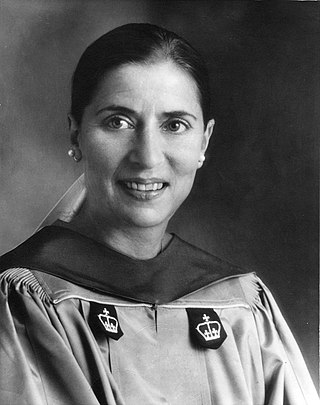
The academic regalia of Columbia University are the robes, gowns, and hoods which are prescribed by the university for its graduates. As one of the oldest universities in the United States, Columbia University has a long tradition of academic dress dating back to its founding in the 18th century, when it became the second university in the country to formally adopt academic robes. The development of Columbia's academic regalia has strongly influenced those of most universities in the United States. Since the passing of the Intercollegiate Code of Academic Costume in 1895, the style of academic dress worn at the university in the late 20th century has served as the basis of those of most other universities in the country. Though once worn daily by students at the university, caps and gowns now are only worn during commencement.
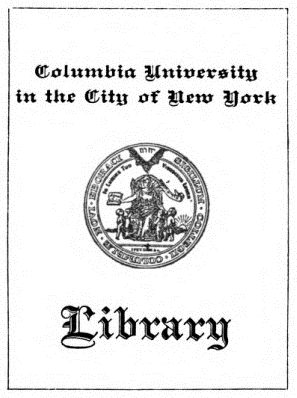
Columbia University represents itself using several symbols, including a university seal and a coat of arms. The seal was first adopted in 1755, shortly after the university's founding, and with few variations continues to be used today. The coat of arms was adopted by the university in 1949. Additionally, the individual schools of Columbia possess their own logos, most of which contain some variant of the King's Crown symbol. Exceptions to this rule include the College of Physicians and Surgeons, which in addition to a logo adopted a variant of the university seal, and the School of General Studies, which inaugurated its own coat of arms in 1950 based on the Columbia arms.

The Class of 1885 Memorial Sundial is a landmark at Columbia University, located at the center of the College Walk at the other end of Butler Plaza from Butler Library. Designed by astronomy professor Harold Jacoby in conjunction with McKim, Mead & White, it was completed in 1914. The 16-short-ton (15 t) granite sphere that once sat on top of it, at some point considered the largest stone sphere in the world, was removed in 1946 after it began to crack; efforts have been made toward its recovery since it was rediscovered in Michigan in 2001. The sundial's bare platform now serves as a popular meeting area for students, as well as a center for campus politics.



















